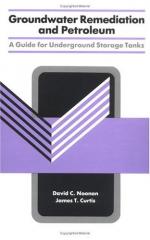|
This section contains 832 words (approx. 3 pages at 300 words per page) |

|
Leaking underground storage tanks (LUSTs) containing hazardous liquids, primarily petroleum products such as gasoline, diesel, kerosene, or oil have contaminated the groundwater and drinking water of thousands of communities across the United States.
Following the boom in automobile sales after World War II, gasoline stations mushroomed across the county to meet the demand for personal mobility. At these new stations, gasoline was stored underground in tanks made of bare steel, which were not protected from corrosion—the oxidation, or rusting, of other metals as well as iron metal in steel that can cause metals to crack or disintegrate and leak. The average life expectancy of steel tanks installed in the 1950s and 1960s was thirty to fifty years. This statistic suggests that petroleum products have been leaking from these tanks, spread throughout the country, since the early 1980s. By 2001, the U.S. Environmental Protection...
|
This section contains 832 words (approx. 3 pages at 300 words per page) |

|


